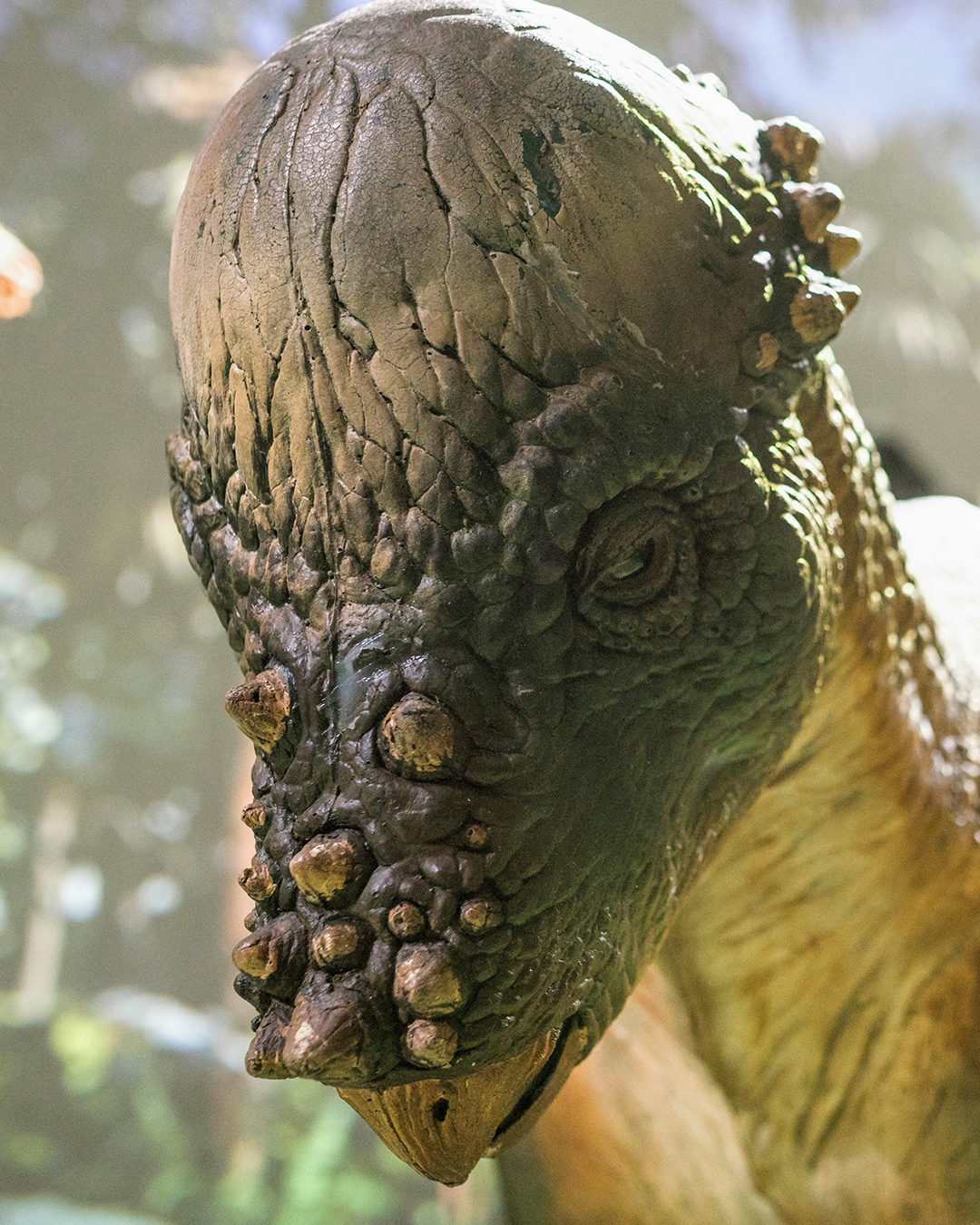24 Enormous Animatronic Dinosaurs To Take Over Philadelphia Zoo For It’s New Attraction “Big Time”
24 Enormous Animatronic Dinosaurs To Take Over Philadelphia Zoo For It’s New Attraction “Big Time”
When Big Time opens, the first stop for guests will be Volcano Vapors, where smoldering rocks, rivers of molten lava and clouds of acidic ash set the scene detailing the searing changes that effected dinosaurs forever. Volcano Vapers will highlight the erupting volcanoes that spouted masses of magma and toxic gases, wiping out most living things, enabling dinosaurs to evolve and take over. While discovering Volcano Vapers, guests encounter the 98-foot-long, 6,000lb. Alamosaurus, the largest dinosaur known in North America, as it swings an enormous, 20-foot-long tail and the 40-foot-long, Edmontosaurus, an herbivore, with a toothless beak so strong it crushed plant material such as ginkgo’s, conifers and cycads.
Guests will then continue on to Prehistoric Passage, where a 40–foot-long, 3,000 pound, T- Rex chomps his threatening jaws and a strange-looking Ankylosaurus sporting a heavy body armor, thrashes its gigantic club-like tail. Check out the Triceratops, with its 1,000-pound head, and three massive horns, the 30-foot-tall Quetzalcoatlus, one of the largest flying animals of all time, with an enormous 35-foot-long wingspan, and the Anzu, a feathered dinosaur resembling a bird, that is 10-feet-long!
Keep trekking, through to Asteroid Void, 66 million years ago, and explore a desolate landscape, the aftermath of the enormous asteroid which struck the Earth wiping out dinosaurs, changing the world forever. Encounter a young, 24-foot-long, T.Rex, observe two huge Pachycephalosaurs, dome-headed herbivores, standing 15-foot-tall and weighing about 1000 pounds, check out the Dakotaraptor, an 18-foot long feathered predator — truly amazing sights!
Migration Maneuvers, takes guests back 70,000 years ago when humans began migrating, causing devastating effects on the wildlife they encountered. The interaction affected a number of species, Migration Maneuvers takes visitors to North America, Madagascar and Australia to walk among the species, now extinct, that once roamed the Earth.
In North America encounter the Smilodon, aka “Saber-tooth tiger”, a ferocious feline, sporting 11-inch fangs, a humongous 15-foot-tall, Woolly Mammoth, ancestor to the Asian elephant, the Glyptodon, a relative of the armadillo, the same size of a Volkswagen Beetle, and the Megatherium the second largest land animal behind the woolly mammoth.
In Madagascar, cross paths with a Megaladaplis or “Koala Lemur,” a prehistoric primate, and check out a pair of Aepyornis, or “Elephant birds”, massive 10-foot-tall animals that weighed about 1200 lbs.
In Australia, be amazed at the Procoptodon, an ancestor of today’s kangaroo, standing 10-feet-tall and weighing more than 500lbs., and the Thylacoleo, also called “Marsupial lion”, the largest carnivorous mammal to ever inhabit Australia, that lived about 2 million years ago.
Returning to present day, guests will meet some species whose days are numbered due to the actions of humans. See a life-size Sumatran rhino, asking for the protection of habitats around the world, a massive polar bear reminding us effects of climate change, a colossal African elephant advocating to stop illegal trade, and a monarch butterfly illustrating how we can all make a difference doing our part to help wildlife here and around the world.
As the Big Time journey comes to an end, guests can take steps to help turn the tide for endangered animals and enact change to ensure a future where we can all live and thrive together on our planet.
TAKE THE PLEDGE
As the Big Time journey comes to an end, guests can take steps to help turn the tide for endangered animals and enact change to ensure a future where we can all live and thrive together on our planet.
• Take a packet of the seeds and grow native plant species that attract and sustain pollinators, such as the monarch butterfly.
• Send a postcard or sign an electronic petition to advocate for global conservation actions aimed at addressing wildlife extinction.
• Advocate for 30×30 and ask national and world leaders to protect 30% of lands and oceans by 2030.
* Social distancing and Masks are required for guests 2+
* Indoor animal exhibits and attractions remain closed.
* Touchless toilets, faucets, paper towel and soap dispensers.
* Hand sanitizing stations throughout the campus.
* More grab and go food selections and touchless transactions at food locations.
* Guests can bring their own food in the Zoo.
* “Clean Team”- staffers dedicated to sanitizing and cleaning high touch areas.
* New procedures that allow public safety officers to check bags without touching.





















